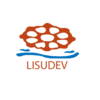What We Do
We work towards ensuring improved access to education, healthcare, clean water and sanitation for underprivileged populations in rural and hard-to-reach communities in Cameroon, as well as empowering women and young girls so that they can live self-sufficient lives and become actors of development in their communities.
HEALTHCARE

The problem
Healthcare is essential for every country. Despite efforts made by the Cameroonian government to improve healthcare, healthcare access remains a big challenge, especially in rural and hard-to-reach communities. The population in these communities’ treks long distances (average 50km) to access healthcare. This puts the lives of patients at risk, especially women and children.
The situation has worsened due to the armed conflict rocking the Northwest and Southwest regions, causing the displacement of people into the bushes. This has increased the threat of malaria and other diseases, with women and children mostly affected. The lack of access to safe water and sanitation facilities also increases the threat of disease, leaving the population at the mercy of death.
Program goal
1. To promote the well-being and improve the healthcare status of underprivileged populations, particularly women, young girls and children.
2. Promote equitable healthcare access for all in Cameroon.
Activities
- Healthcare infrastructure development (construction, rehabilitation, equipping)
- Sexual Reproductive Health and Rights
- Healthcare access promotion and awareness
- Healthcare workers (CHW) training
- Health education
WATER and SANITATION
The problem
Water and sanitation are very crucial for human well-being and health. However, millions of people, especially those living in rural and hard-to-reach communities in Cameroon, lack safe and adequate water. As such, many suffer from several preventable water-borne diseases, such as cholera, urinary schistosomiasis, and typhoid.
Many communities depend on unprotected water from streams and rivers, which is unsafe for human consumption, and most often, people can be seen in villages bathing upstream while others are downstream carrying water for home consumption. Often, women, children, and young girls have to travel long distances in search of water to drink, cook, bathe, and wash their clothes, and as such, are exposed to rape and violence. Sometimes, these unprotected water sources are also shared with animals, which have been a major source of contamination and cause of cholera and other water-borne diseases in the country.
The population in most rural communities in Cameroon practices open defecation. As such, human waste is often washed into the streams and rivers from which the population relies. These favour the breeding and spread of water-borne diseases.
Climate change is also making the situation horrifying as the water sources from which the population relies dry up, especially during the dry season.
Schools and health centres in rural communities also lack adequate hygiene and sanitation facilities, including safe drinking water. Schoolchildren in rural communities defecate in the open air, streams, and rivers and, as such, are exposed to diseases.

Healthcare delivery is also hindered or cannot be guaranteed without access to water and sanitation facilities in health centres. Inadequate access to WASH products and WASH education (including menstrual health and hygiene) also negatively affects well-being and the environment.
Program goal
The goal of the WASH program is to ensure the availability of clean water and sanitation for all in Cameroon.
Activities
- Sanitation and hygiene awareness
- Water and sanitation infrastructure development (construction and rehabilitation).
- Sanitation and hygiene products and services
EDUCATION

The problem
Education for children is the backbone of every family, community, and country. It is a fundamental human right and contributes to the alleviation of poverty by helping poor families improve their lives. In Cameroon, access to education remains a challenge, especially in rural and hard-to-reach communities, despite government efforts.
In Cameroon, basic education in public schools is free, but a huge burden depends on the parents to provide the necessary facilities. As a result, most schools in rural communities lack adequate infrastructure, teaching staff, sanitation facilities, and safe drinking water. Thousands of children in rural and hard-to-reach communities do not also attend school due to poverty. The situation is being worsened by the ongoing arm conflict in the Northwest and Southwest regions, which continues to affect many, especially women and children. These factors have resulted in a high rate of school dropout, a high rate of teenage pregnancy, a high rate of street children, poor performance, and a high-risk learning environment.
Program goal
To contribute towards the achievement of SDG 4 of inclusive quality education for all.
Activities:
- Educational financing and scholarships: For underprivileged children in rural and hard-to-reach communities.
- STEM education for adolescent girls
- Early childhood development: Facility development (Construction, rehabilitation, and equipping of educational structures), teaching materials, and targeted support.
AGRICULTURE
Activities
- Provide skill training to rural farmers on the use of productive systems that are resilient to climate change.
- Provide quality seeds and farming tools to rural farmers to improve yields.
- Promote regenerative, organic and conservation farming
- Supply chain strengthening and market linkage

